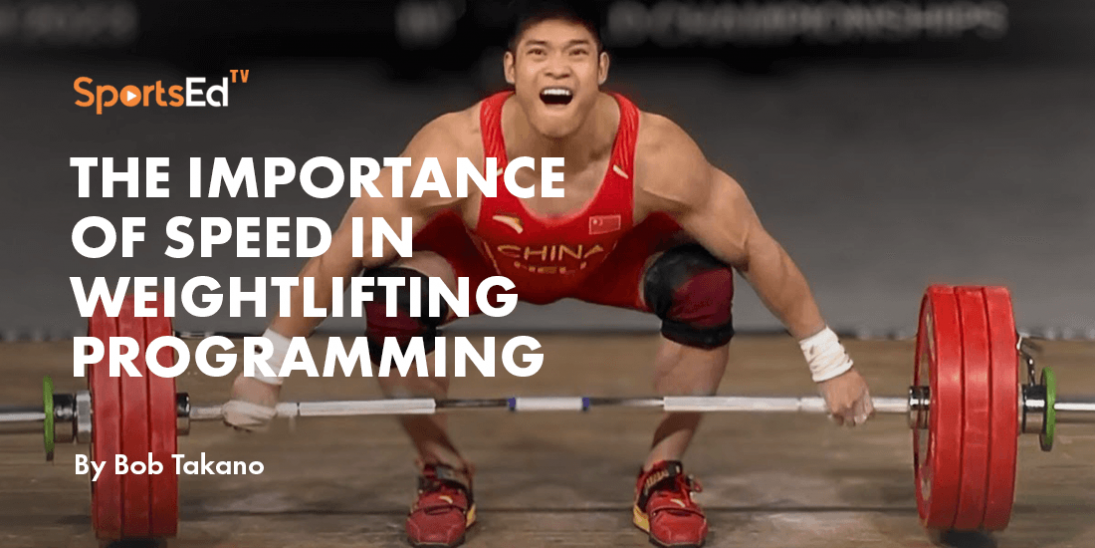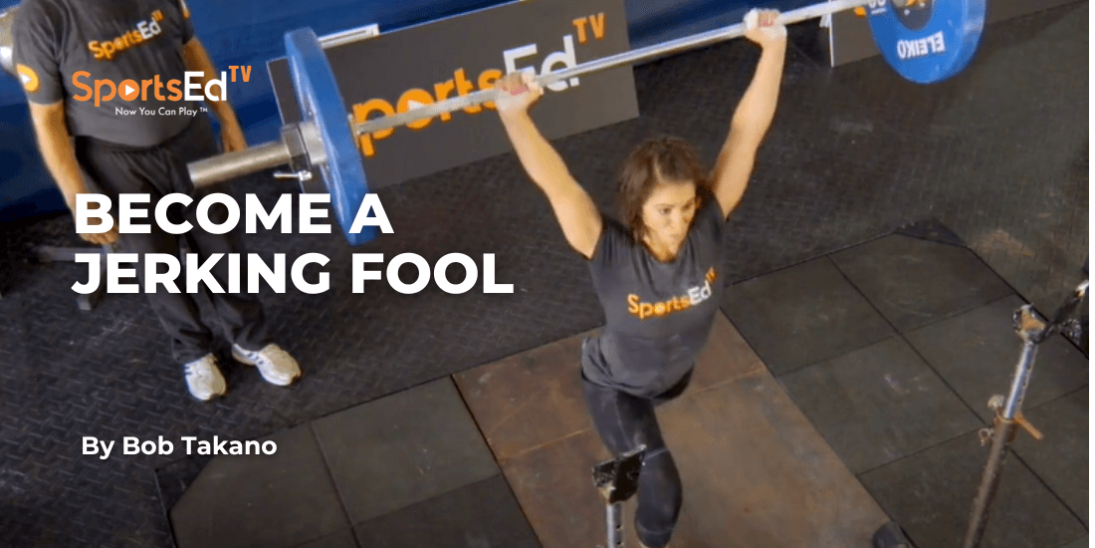Strength And Conditioning, Weightlifting
Welcome and thanks for visiting...

Making Weight In Olympic Weightlifting
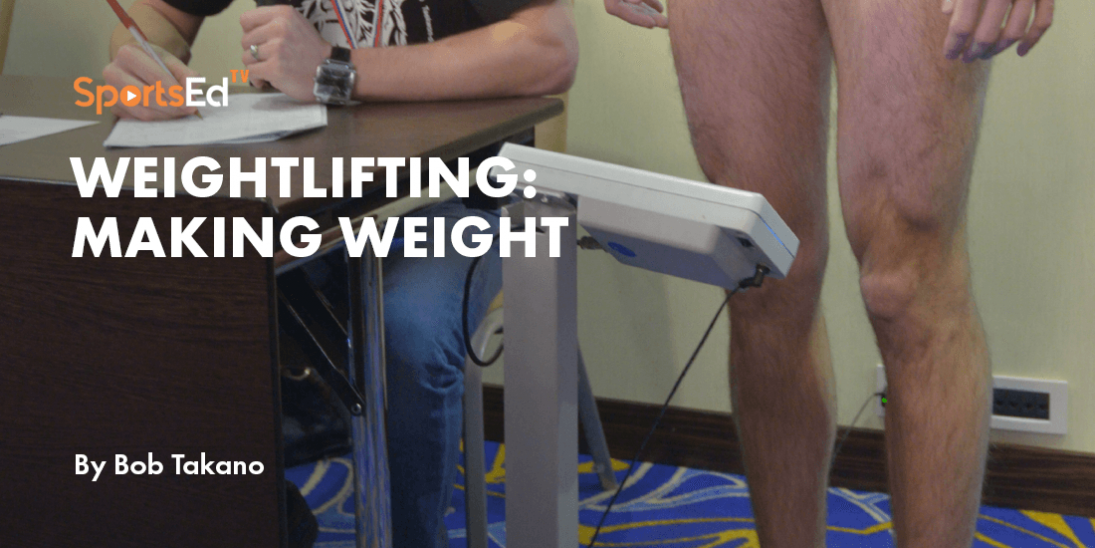
It’s long been a custom within the sport of weightlifting (and other sports with bodyweight classes) to cut or reduce bodyweight for competition to allow the athlete to compete in a lighter bodyweight class with the belief that the placing will be higher. Many coaches are deeply committed to this belief, although there is very little evidence to justify the practice, and in many cases, it is actually harmful to the health of the athletes. A look at the practice might be for new coaches entering the sport.
Let’s start by looking at a sport where cutting weight is the norm and can lead to disastrous outcomes. This has become a problem in Mixed Martial Arts (MMA), as weigh-ins are conducted the day before the competition. This leads coaches to believe that more drastic bodyweight reductions are warranted as there is more time to regain body weight. Unfortunately, this is oftentimes carried to the extreme and, in all too many cases, has led to the death of some competitors.
Weightlifting is used to conduct weigh-ins within the hour immediately before the start of the competition. The weigh-ins were later conducted one hour, 15 minutes before the competition, and 15 minutes before the competition. This probably took place to allow the officials conducting the weigh-ins to have some time to get from the weigh-in to the competition venue. Weigh-ins are now held from two hours to one hour prior. This, fortunately, discourages a belief in excessive bodyweight reductions.
WHO SHOULD BE CUTTING WEIGHT
Losing fluids to reduce body weight for competition should only be undertaken by mature athletes who are at the proper body weight for their height and only for major competitions or qualifying events for those competitions. It should only take place two, maybe three times per year.
It should not be done with the majority of juniors and not at all with youth athletes. Young athletes should be allowed to grow to their full stature before undergoing frequent bodyweight loss. Juniors, especially in the higher bodyweight classes, often do not have enough muscular body weight to perform well in the clean &; jerk.
OPTIMAL BODY WEIGHT TO HEIGHT FIGURES
I include the following tables to provide guidelines for ideal body weights in relation to athlete heights. These are recommended for elite-level athletes, but the trends are important to note.
Men’s weight classes
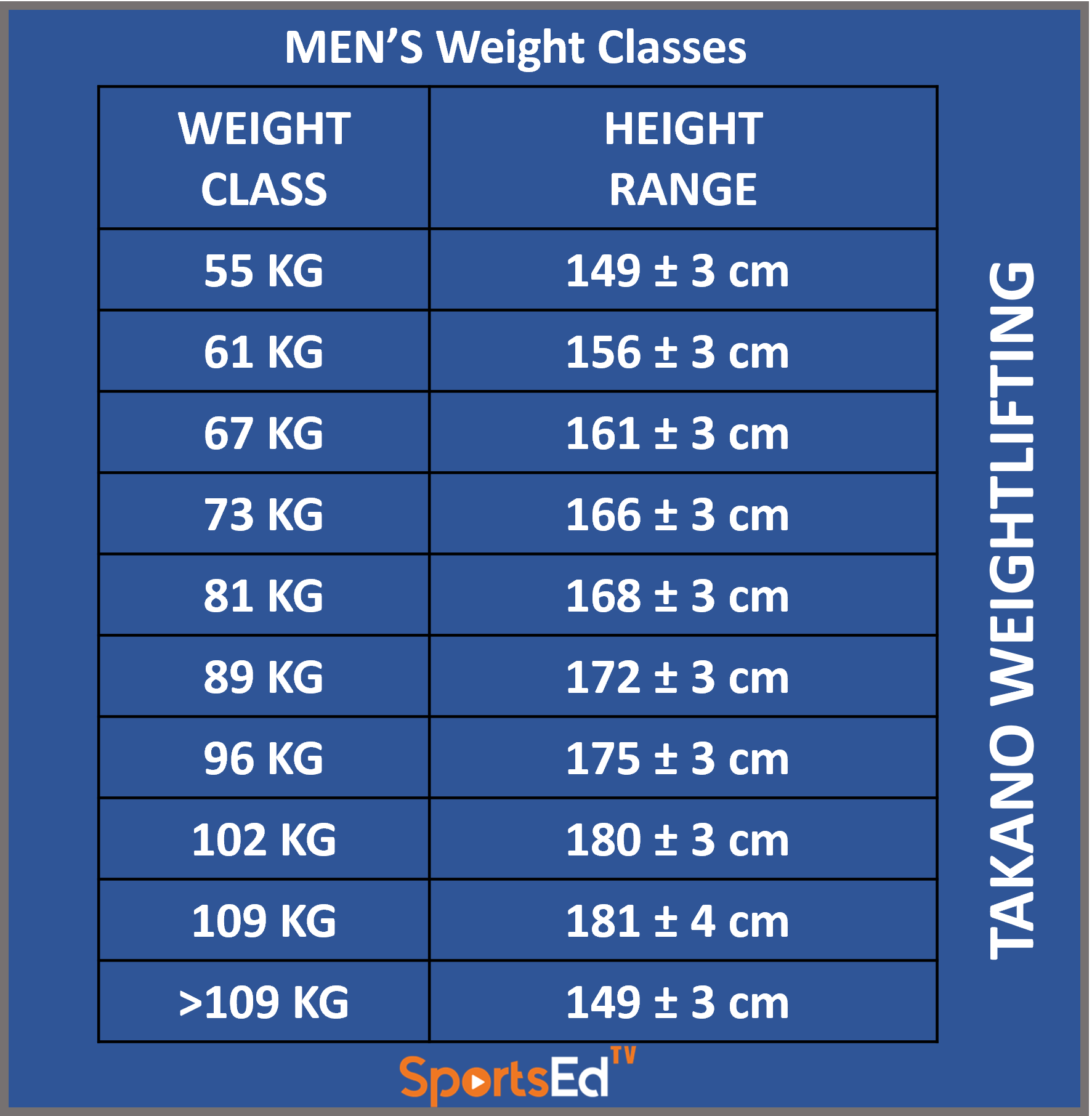
Women’s weight classes
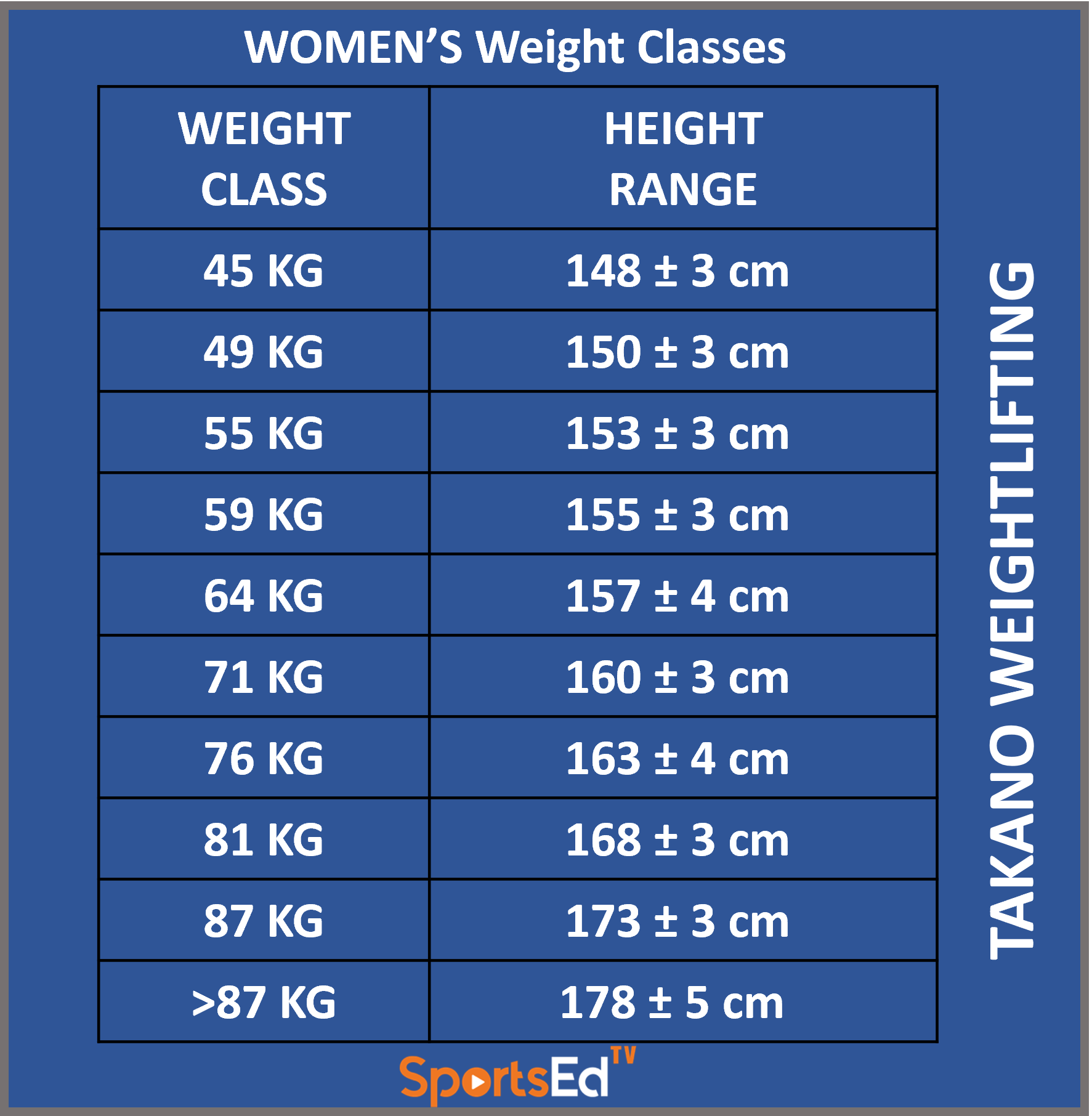
TRAINING BODY WEIGHTS
Most athletes need to carry some excess body weight during training (especially during the Preparation of mesocycles) to provide the calories to recover from rigorous training. This will require the consumption of 3 large meals and 2 to 3 small meals during the course of the day. This number of Calories can range from 2500 per day for lighter athletes to 7000 for larger lifters. This will put the training body weight at approximately 3% above the class limit.
DE-LOADING FOOD
Much of the overage can be reduced by cutting back from 5-6 meals per day to 3 normal-size meals during the final week.
DEHYDRATION
The final few kilos can be eliminated through passive dehydration processes. This is especially helpful as lost water can be easily replenished. Minimizing drinking and using a sauna will allow the lifter to lose the last few kilos. Rehydration should occur shortly after the weigh-in takes place. Electrolytes must also be replaced. Carbohydrate-rich foods should also be consumed after a weight drop, but fats are discouraged as they are more difficult and time-consuming to digest and will raise the pH of the gastrointestinal tract.
CONCLUDING THOUGHTS
The practices invoked for cutting weight at any given time may work well for a while but may lose effectiveness after some time. This might indicate that the athlete needs to increase body weight and reach the next weight class.
If an athlete’s results show that the snatch consistently exceeds 82% of the clean &; jerk, this is a good indicator that the athlete needs to move up.
One of my early influences in this area was Hank Lujan, the former Cuban coach whose son Ricky was an exceptional junior lifter for the U.S. Hank did not believe in having juniors cut weight, and at the first National Junior Olympics championships in 1972, he entered Ricky in the 82.5 kg class. Ricky weighed in at 75.3 kg when the next lowest class was 75. Hank wanted Ricky at full strength and didn’t want him cutting weight. Ricky broke all the national records and won the class, going away! Since that time, I’ve pretty much only had lifters cut weight for national and international events, or the qualifying meets.
FOR MORE HELPFUL INFORMATION
For those searching for the most credible training information based on fifty years of coaching experience, the Takano Weightlifting Coaching Membership is a vast collection of videos and written content touching upon a complete approach to coaching weightlifting. Coaches of beginners and elite athletes will be able to discover helpful content. Check out this link https://takanoweightliftingcoaching.net/vsl-order-formeicq33md to find out more and sign-up.




